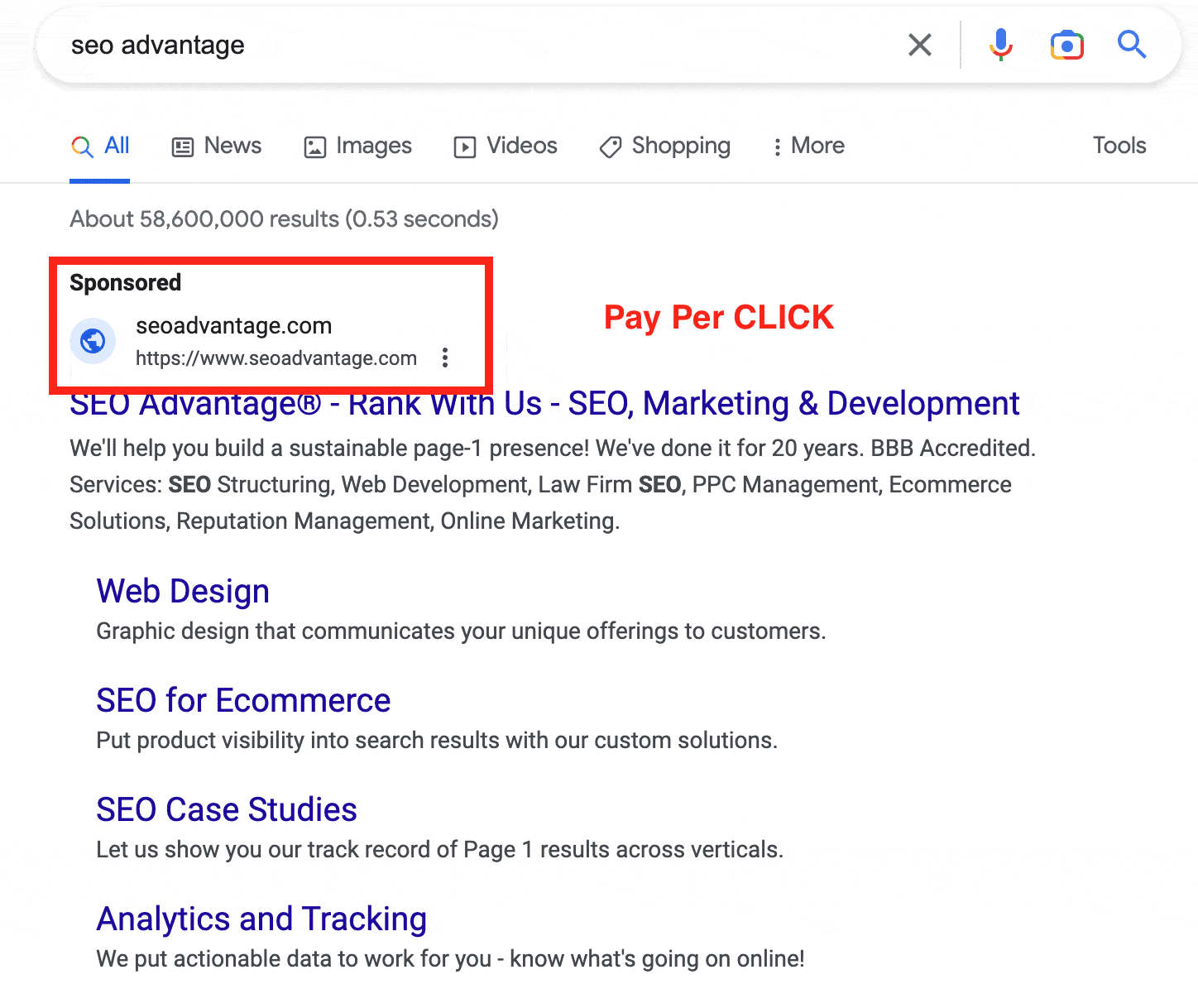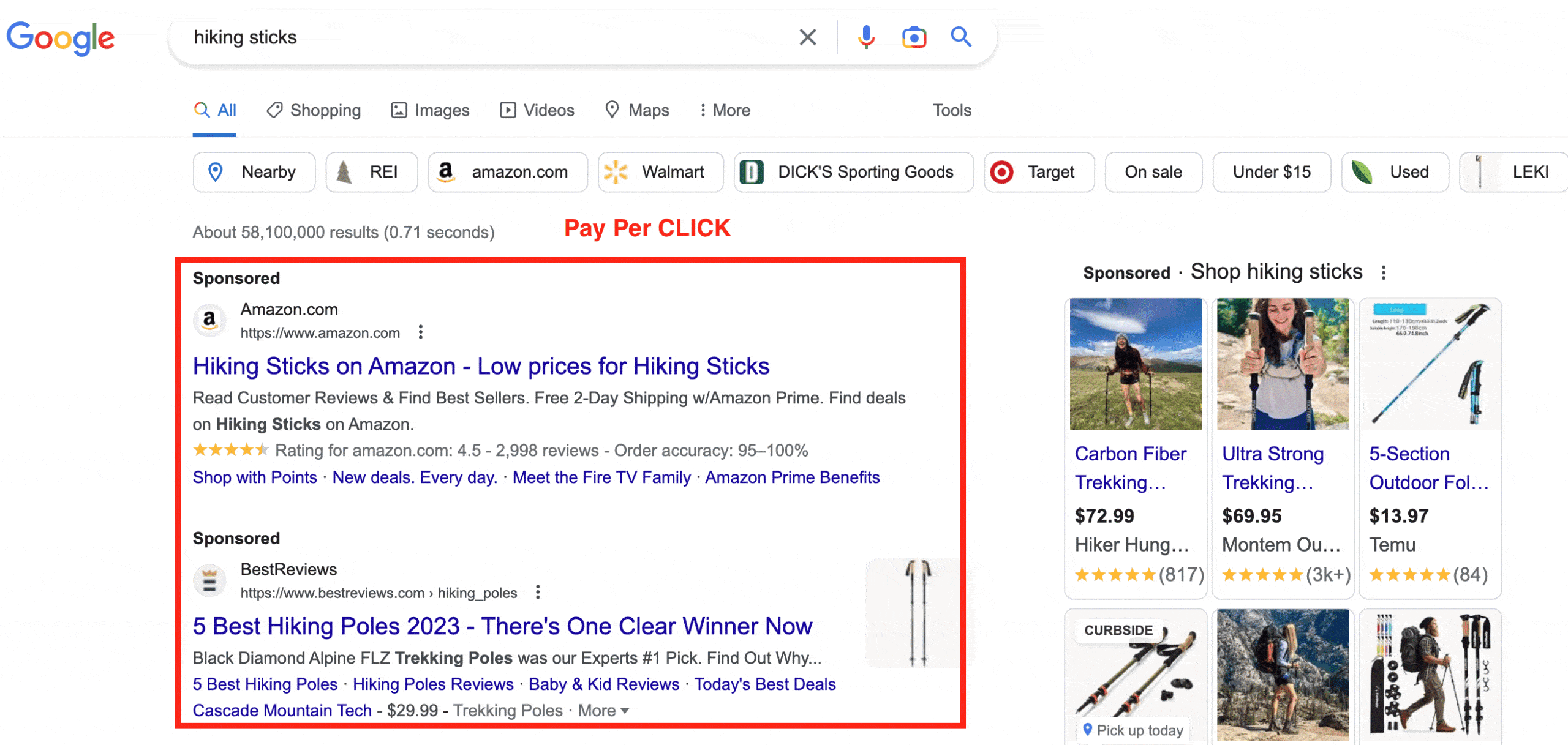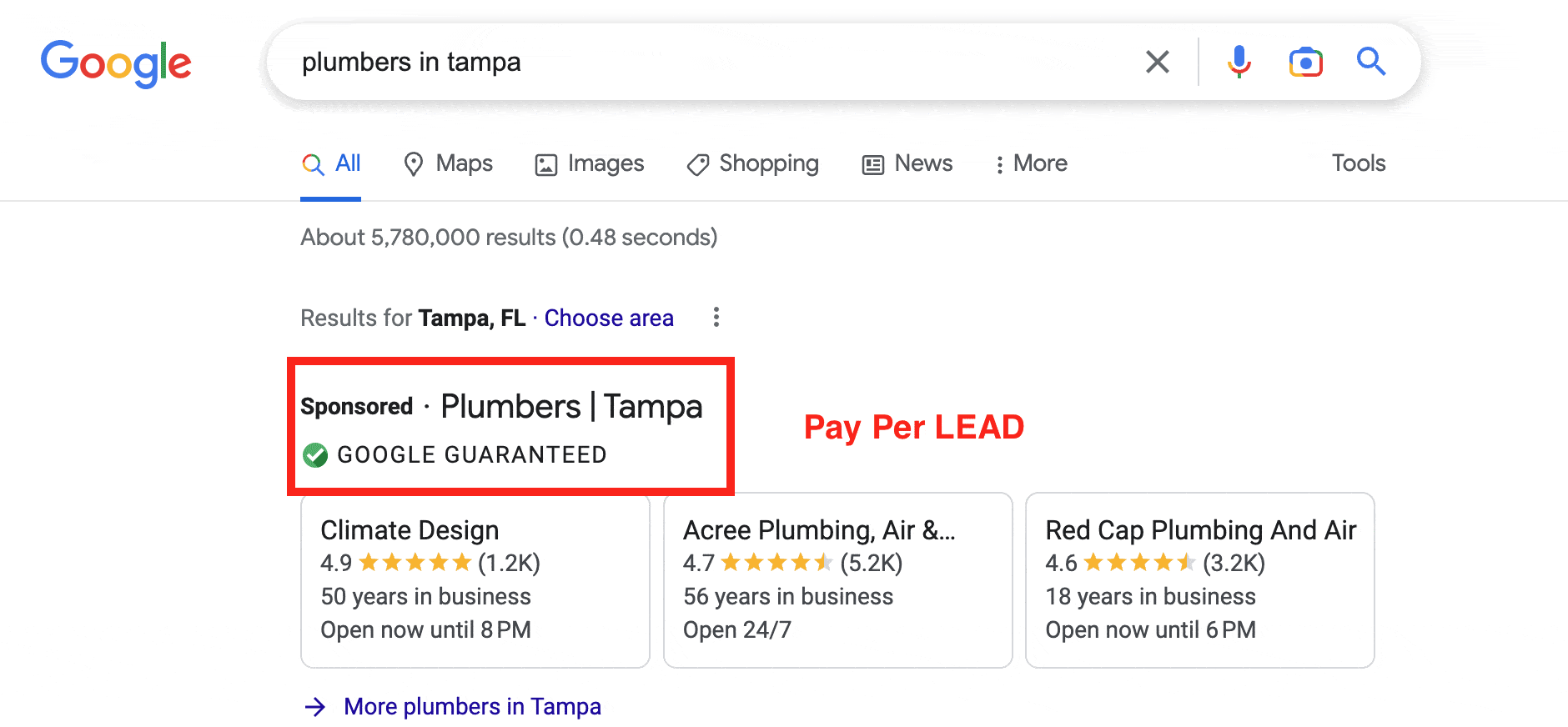Maximize your online visibility with Google PPC advertising. Learn how to set up, manage, and optimize successful campaigns for your business.
Pay-per-click, or PPC advertising, is an online advertising medium that has grown tremendously in the last decade – with Google AdWords accounting for roughly half of all PPC advertising on the Internet.
PPC is by far the quickest way to bring traffic to your site. Building organic rankings through search engine optimization can take time to show results – thus, PPC is an effective way to draw those closest to a buying decision to your website from the onset of its launch.
How to create your Google PPC ad in a variety of formats
Your Google PPC ads can be developed in a wide-variety of formats, everything from simple text ads to more complex video, image and mobile ads.
The format of your PPC ad depends a lot on your product and target audience – even if you’re a small business serving only a local market, PPC ads are available that display on Google Maps.
Text ads though are the simplest to set up and the most common – copy in these ads have to be carefully crafted however.
Google PPC advertising
Pay-per-click (PPC) advertising is a model of online advertising where advertisers pay each time someone clicks on their ad. Google PPC advertising is a type of PPC advertising that allows businesses to place ads on Google’s search engine results pages (SERPs), as well as on other Google properties and partner websites.
AdWords allows businesses to bid on keywords, set budgets, and create and test different ad formats. It also provides detailed reporting and analytics to help businesses optimize their campaigns for better results.
PPC ads are typically displayed alongside organic search results on search engine results pages (SERPs) and are marked as “sponsored” or “ad.”



What is the ad bidding process?
When someone searches for a keyword on Google, an auction is triggered to determine which ads will be displayed on the search results page. The auction takes place in real-time, and ad placement is based on a combination of the advertiser’s bid, ad quality, and expected click-through rate.
Ad placement on Google’s search engine results pages is determined by a combination of the advertiser’s bid and ad quality. Ad quality is determined by factors such as expected click-through rate, relevance, and landing page experience.
Benefits of Google PPC advertising
Stone’s SEO Corner
If you’d like to rank FAST, go PPC. Keep a few things in mind: what is your budget, and how long can you sustain the advertisement? If you’re operating in a highly competitive niche within a densely populated city, it would be ideal to have a substantial budget that you can maintain for at least six months.
Don’t dive in without a plan. Start with keyword research. Buying keywords without strategy is like opening the floodgates on your budget, particularly if those terms aren’t converting into sales.
Just as you would with organic SEO, keep a close eye on your campaigns and fine-tune them regularly.
Some benefits to PPC advertising:
- Ability to target specific audiences: With Google PPC advertising, you can target specific audiences based on location, demographics, interests, and more. This allows you to reach people who are most likely to be interested in your products or services, resulting in a higher return on investment (ROI).
- Ability to set budget and control costs: You have complete control over your budget and can set daily and monthly spending limits for your campaigns. This helps you to avoid overspending and allows you to allocate your budget based on the performance of your ads.
- Ability to track and measure results: Google provides detailed metrics on your campaigns, including clicks, impressions, conversions, and more. This allows you to track your ROI and adjust your campaigns accordingly to maximize your results.
- Quick results compared to other forms of advertising: Unlike traditional forms of advertising, Google PPC advertising can generate quick results. Once your campaigns are live, you can start receiving clicks and visits to your website within minutes.
Set up a Google PPC campaign
Setting up a successful Google PPC campaign involves several crucial steps.
Set up a Google Ads account
The first step is to set up a Google Ads account. This can be done by visiting the Google Ads website and creating a new account. Once you’ve set up an account, you’ll need to link it to your website.
Start here: https://ads.google.com/home/
Conduct keyword research and utilizing PPC keyword research tools
Keyword research is essential in developing an effective Google PPC campaign. It involves researching the keywords and phrases that your target audience uses to search for products or services related to your business.
Various keyword research tools like Google Keyword Planner, SEMrush, and Ahrefs can assist in this process.
Organize keywords into ad groups and campaigns
Once you’ve identified the keywords to target, you should organize them into relevant ad groups and campaigns. This helps you to create targeted ads for each keyword and makes it easier to monitor the performance of your campaigns.
Write effective ad copy
Effective ad copy is essential to the success of your PPC campaign. Your ad copy should be relevant, engaging, and persuasive. Focus on the benefits of your product or service and include a clear call-to-action.
Set up ad targeting
Google Ads provides various targeting options, including geographic targeting, language targeting, device targeting, and more. You can also target specific demographics like age, gender, and income.
Set up bidding strategy
Your bidding strategy determines how much you’re willing to pay for each click on your ad. You can choose from various bidding options, including manual bidding and automated bidding. It’s crucial to set a budget and monitor your bidding strategy to ensure that you’re getting the best value for your money.
Stone’s SEO Corner
Build your PPC landing page: On a tight budget? Begin with the most relevant page on your website. That’s a good place to start. I know it’s not ideal but you work with what you have.
If time and budget allow, create a dedicated PPC landing page optimized for the keyword groups you’re bidding on. Make the user’s journey from your ad to your landing page seamless.
For example, if a user searches for ‘hiking sticks’, they should land on a page that mirrors the language used in your ad copy, featuring an array of hiking stick products.
Each click has a price tag. So, budget wisely.
Different types of Google PPC ad formats and their benefits
Google Ads provides various ad formats, including text ads, display ads, shopping ads, and video ads. Each format has its unique benefits and can be used to target different audiences. It’s essential to understand the advantages of each format and choose the one that’s best suited for your campaign goals.
Places where Google PPC Ads may appear
Google PPC ads have a wide reach and can appear in multiple places across the web. Understanding where your ads may appear is crucial for developing an effective PPC campaign.
SERPs and ad placement based on bidding
Google PPC ads may appear above or to the right of the organic search results on the search engine results page (SERP). The ad’s prominence depends on the bid per click, which is determined by the advertiser. Ads with higher bids are more likely to appear in a prominent position on the SERP.
Partner websites and properties
Google has numerous partner websites and properties where PPC ads may appear. These include Gmail, Froogle, Google Maps, and major websites in partnership with Google like AOL, Ask.com, and Earthlink.
When running a Google PPC campaign, advertisers have the option to choose where they want their ads to appear, giving them more control over their advertising strategy.
AdSense ads
Google also has an advertising program called AdSense, which allows website owners to display Google PPC ads on their site.
AdSense ads are displayed on a vast number of websites across the web, and Google pays the website owner for each click.
While AdSense ads provide exposure to a broad audience, it’s recommended to bid lower for these ads since site traffic from them isn’t as good as PPC ad traffic from SERPs.
Start here: https://adsense.google.com/start/
Tips for running a successful Google PPC campaign
Running a successful Google PPC campaign requires more than just setting up an account and bidding on keywords. Here are some tips to help you optimize your campaign:
- Continuously monitor and adjust your campaign: Regularly checking your campaign’s performance and making adjustments based on the data can improve its overall success. Adjustments can include modifying keyword bids, adding or removing keywords, and changing ad copy.
- Utilize ad extensions: Ad extensions can improve the visibility and relevance of your ads by providing additional information to potential customers. Examples of ad extensions include sitelinks, callouts, and location extensions.
- Implement A/B testing: Testing different versions of your ad copy, landing pages, and other campaign elements can help you identify what works best for your target audience and improve your campaign’s performance.
- Utilize retargeting: Retargeting allows you to target people who have previously interacted with your website or ads, increasing the chances of converting them into customers.
- Write strong ad copy to improve Quality Score and lower advertising costs: Crafting effective ad copy that includes relevant keywords can improve your Quality Score, which can ultimately lower your cost per click.
Ready to elevate your PPC game?
At SEO Advantage®, we provide a full suite of PPC Management Services, taking care of everything from in-depth keyword research and engaging copywriting to strategic bid management, meticulous tracking, and comprehensive reporting.
Alternatively, we’re more than happy to get you set up with a solid foundation, so you can confidently take the reins from there.